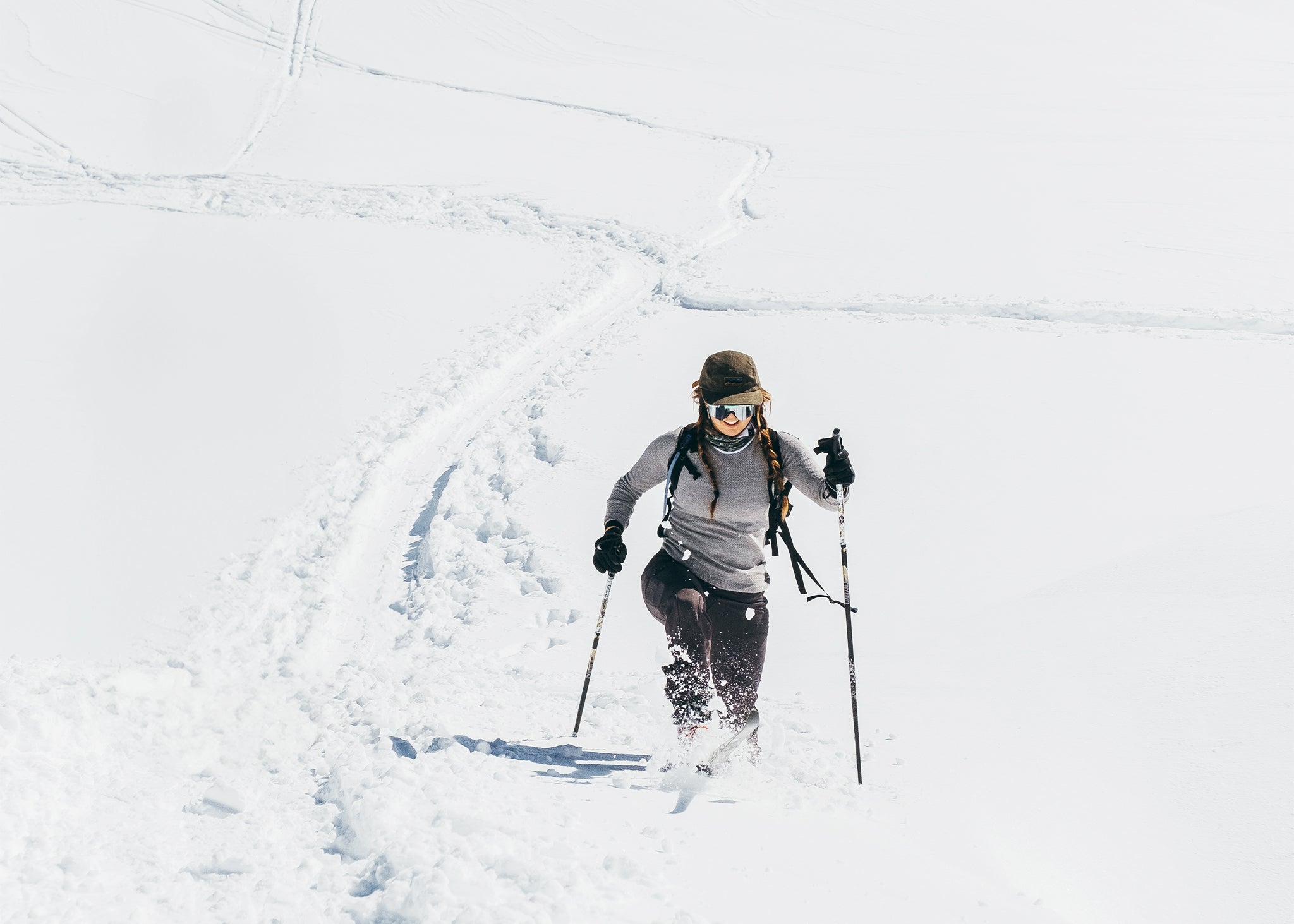Gear Care & Repair
Common Winter Gear Questions, Answered

As the winter season unfolds, it's crucial to stay warm and protected against the elements, whether you're hitting the slopes to ski, snowboard, and snowshoe, or braving the cold for your daily commute. This post will touch on some common winter gear questions. We'll provide tips on layering, revitalizing outerwear, and repairing worn winter gear - from the importance of base layers to the art of re-waterproofing, we've covered the basics you should know to enjoy the winter season comfortably and safely. Let's dive into the essentials of winter gear care and make the most out of this snowy season.

The Essentials of Winter Apparel and Outerwear

Layering for Winter
The secret to staying warm and comfortable during winter activities lies in the art of layering. The three-layer system – comprising base layers, mid-layers, and outer layers – each serves a unique purpose.
Base Layers: These are the closest to your skin and are critical for moisture management. They're typically made from merino wool or synthetic materials, and thinner layers generally wick sweat away fastest. To keep these layers in top condition, wash them with a mild, technical fabric wash. Avoid fabric softeners and fragrances, as they can degrade the material's moisture-wicking properties. Dry per the garment's manufacturer instructions, or use low heat in your dryer.
Mid-Layers: Serving as the primary insulating layer, these often consist of fleece, polyester, or down. Avoid cotton if possible - it retains moisture which can make you colder and even become dangerous. Wash mid-layers similar to base layers with a technical wash, and use low-to-medium heat, as well as dryer balls (if you're washing down). You can even wash down with a specific down cleaner to revive loft and keep your jacket warm and cozy.
Outer Layers: Your top layer is your shield against the elements. Outer layers generally consist of water-resistant and waterproof rain and ski jackets. As with base layers and mid-layers, regular care includes washing with a technical wash to maintain their waterproof and breathable qualities. Over time, you may need to reapply, or treat, their Durable Water Repellent (DWR) coating.
Re-waterproofing Winter Gear
When you start noticing water soaking into your gear rather than beading off, this is known as ‘wetting out’ and it means it’s time to re-waterproof the layer. You may already know that the outdoor industry is moving towards ‘Forever Chemical’-free or PFAS-free formulas, but did you know that PFAS-free treated gear can require more regular maintenance to remain effective? Unlike their “forever” counterparts, they don’t last indefinitely, and regular upkeep ensures their long-term effectiveness. We recommend re-waterproofing with a DWR Spray or Wash-In treatment. The choice between between the two depends on the item and your preference. Spray-ons are great for targeting specific areas, while wash-ins offer overall protection.

Using Durable Water Repellent
Cleaning your gear before applying DWR is essential - dirt, oil, and grime on any fabric not only compromises the water repellency effectiveness but can attract water, causing the jacket to 'wet out' more quickly. A thorough cleaning not only enhances the product's performance for insulation and warmth but also ensures a longer-lasting and more reliable water repellency.
Apply the DWR evenly, following the product's instructions. Click here for an in-depth blog post on how to apply DWR.
For Wash-In Water Repellent, heat activate in the dryer. For Spray-On DWR, you can either heat activate or air cure. Heat activation should be done by tumble drying on low.
Maintaining GORE-TEX
GORE-TEX is a highly advanced membrane technology that provides exceptional waterproofing while maintaining breathability. This fabric relies on a microporous structure, allowing water vapor to escape while preventing water droplets from entering. Regular cleaning with a GORE-TEX-friendly detergent preserves the integrity of the membrane and prevents clogging of those microscopic pores. Regularly treating it with a DWR spray or wash-in will help maintain water resistance throughout the years, no matter the conditions. GEAR AID also makes GORE-TEX fabric patches, so you can patch your gear with the same high quality you’re used to from your GORE-TEX gear.

Repairing and Revitalizing Worn Winter Gear
Repairing Delaminated Jackets (and Tents!)
Delamination is a common issue with older gear. This is where the waterproof membrane peels away, or your seams are coming apart in places where they were previously glued/laminated together. For jackets, use a specialized sealant designed for waterproof fabrics. Ensure the area is clean and apply a thin layer, making sure it’s over 60° F when applying. For tents, similar methods are used, with extra care taken for seam areas. Click here for more tips on using Seam Grip.
Patching Techniques
Making DIY repairs can extend the life of your gear significantly. GEAR AID makes different patches and strips of repair tape for jackets, ski pants, tents, puffers, and more. When using repair tape strips, clean the area with rubbing alcohol, cut a piece that will overlap the rip by at least 0.5” in all directions (rounding the corners to prevent peeling), and then press firmly. For smaller repairs, use our pre-cut patches by simply cleaning the area, peeling off the backing, and then sticking it to your gear. The type of repair tape used depends on the material; for example, nylon repair tape is great for synthetic fabrics, while GORE-TEX patches are better for GORE-TEX fabrics.
Winter Boot Repairs
Boots face the brunt of winter’s harshness. Regular cleaning and waterproofing are key to keeping your feet dry. We recommend either a Leather Boot Care Kit or a Suede Boot Care Kit to make caring for your boots foolproof. For repairs, Aquaseal SR can help effectively mend tears and holes in most boots. Clean and dry the area first, apply Aquaseal SR, and allow it to cure for 8-12 hours for a strong, flexible repair to keep your feet warm and dry.
Cleaning and taking care of your winter gear is a worthwhile investment. Regular maintenance, timely repairs, and the right products can make a significant difference in how much fun you have outdoors in the winter. If you have questions or need more detailed information, our team is here to help. Don't hesitate to reach out or visit our help blog for more in-depth guides on winter gear care and repair. Stay warm and enjoy the winter season with confidence in your well-maintained gear!


